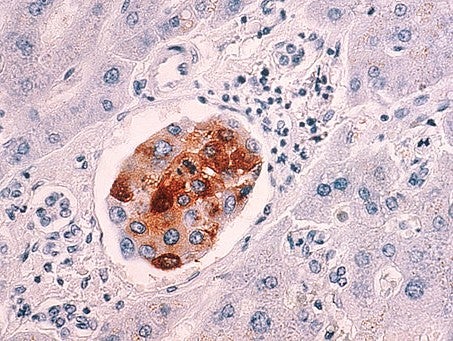
Researchers at the Fred Hutchinson Cancer Research Center in Seattle, the US, have discovered how cells that have broken away from breast cancer tumours evaded chemotherapy and have pointed to a new possible therapeutic option to reduce breast cancer metastasis.
The study, which was published in Nature Cell Biology, showed that disseminated tumour cells (DTCs) were found most commonly in the bone marrow because they were stuck to blood vessels by signalling proteins called integrins.
This led to the conclusion that the relationship between the DTCs and integrins was the mechanism allowing DTCs to evade chemotherapy, rather than the DTCs lack of division, as was previously assumed.
The team collaborated with Peter Nelson’s laboratory at the centre to use RNA sequencing to prove it was the integrins, rather than another protein, that was responsible for connecting the DTCs to blood vessels.
In organanotypic cultures seeded with human breast cancer cells, the team was able to use integrin inhibitors to kill the DTCs without waking them up, which showed that cell division was not necessary to encourage chemotherapy action.
Lead author of the study Dr Cyrus Ghajar said: “It’s always been assumed that dormant cells cannot be killed by any kind of chemotherapy because they’re not dividing.

US Tariffs are shifting - will you react or anticipate?
Don’t let policy changes catch you off guard. Stay proactive with real-time data and expert analysis.
By GlobalData“But what we’re showing is that’s not true. They’re relying on survival signalling in their microenvironment, in this case specifically from blood vessels within the bone marrow. And if you can take away that signalling, you can sensitize them to chemotherapy.”
He continued: “Chemo on its own would kill one third of all the single cells in our culture. But when we combined integrin inhibition and chemotherapy, we killed over 90 percent of the single cells in our cultures.”
The researchers also used mouse models with breast cancer in the study. They found that a combination of integrin inhibitor and chemotherapy was able to reduce the number of DTCs in the bone marrow by 94% and the probability of metastatic recurrence was reduced significantly.
The next step from these findings is to create human versions of the molecule used for integrin inhibition and to test to see if it is safe in humans.
Ghajar said he believes the team’s demonstration that dormant cancer cells can be killed by chemotherapy without activating them is a significant discovery in itself.
“No matter what happens with regard to the specific molecules we’ve discovered, that concept is going to endure,” Ghajar said.



